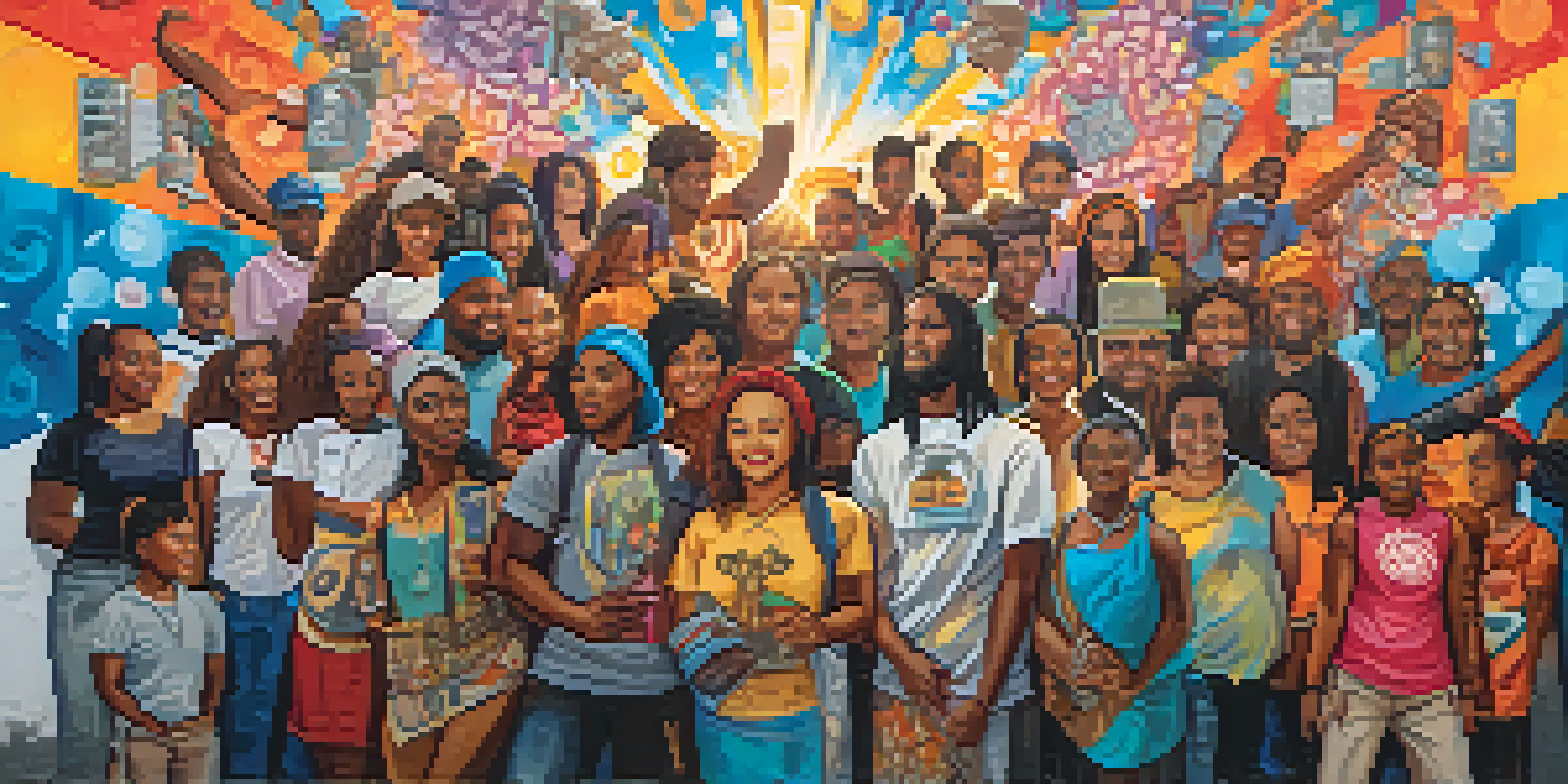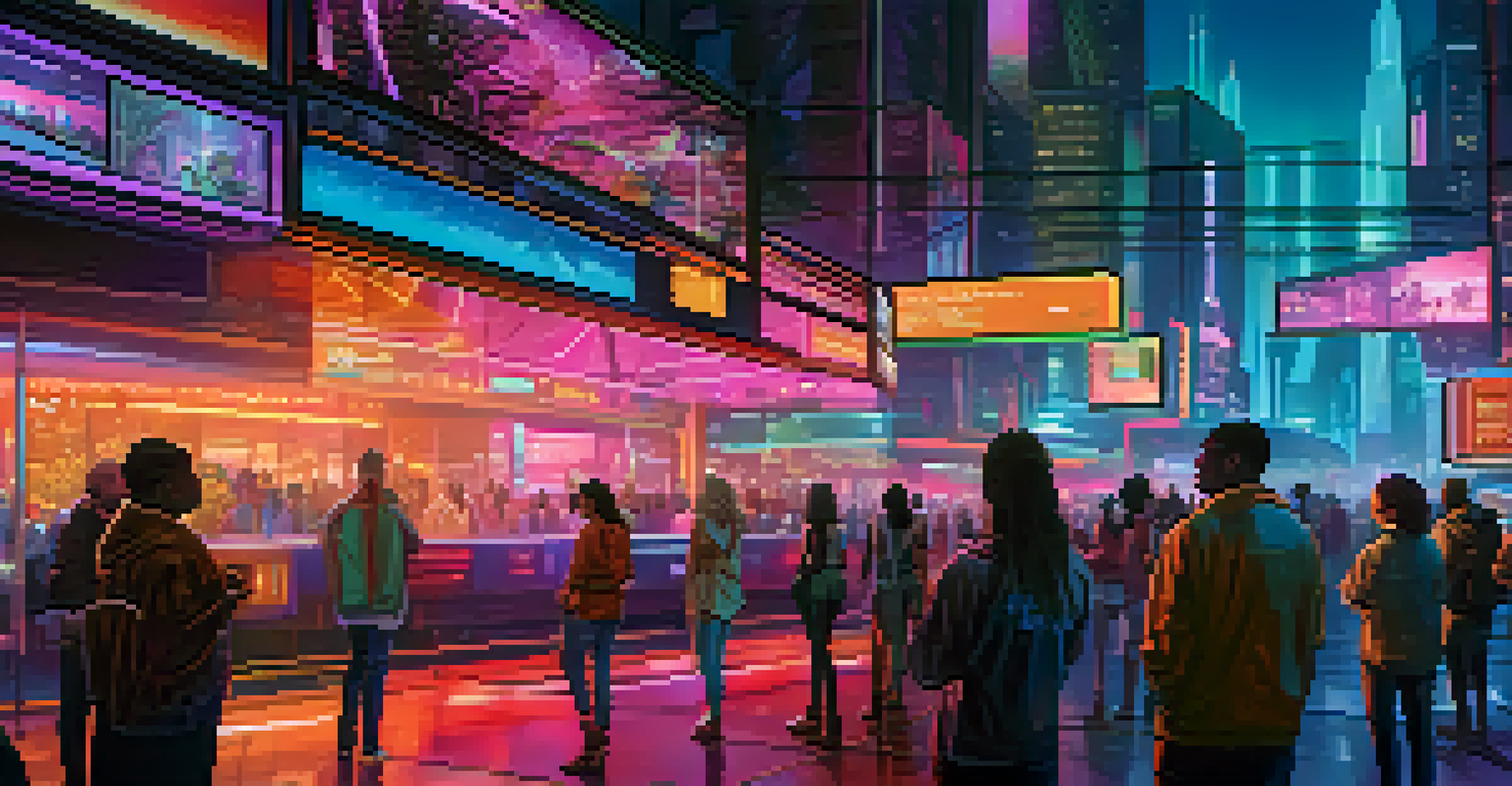Art and Activism: Shaping Cultural Narratives Through Protest

The Intersection of Art and Activism in Society
Art and activism have long intertwined, each enhancing the other. When artists channel their creativity into social causes, they spark conversations that can lead to meaningful change. From murals to performance art, these expressions become powerful tools for advocacy and awareness.
Art is not freedom from discipline, but disciplined freedom.
Historically, movements like the Harlem Renaissance and the feminist art movement exemplified how creative expression can challenge societal norms. Artists become the voice of the voiceless, using their platforms to highlight issues that need urgent attention. This synergy not only informs but also inspires action among audiences.
In today's digital age, the combination of art and activism has reached new heights, with social media amplifying these messages worldwide. Artists can share their work instantly, making it accessible and relatable to diverse audiences. This democratization of art allows more voices to join the conversation, enriching cultural narratives.
Historical Context: Art as a Catalyst for Change
Throughout history, art has served as a mirror reflecting societal issues. During the Civil Rights Movement, artists like Jacob Lawrence used their work to depict the struggles and aspirations of African Americans. Their art not only documented history but also motivated individuals to fight for their rights.

Similarly, during the anti-war protests of the 1960s, artists created powerful imagery that questioned the status quo. Works like Picasso's 'Guernica' or the protest songs of Bob Dylan became iconic symbols of dissent. These pieces challenged viewers to confront uncomfortable truths and engage with critical issues.
Art Drives Social Change
Art and activism together spark conversations that inspire meaningful societal change.
As we look back, it's clear that art has been instrumental in shaping cultural narratives. It provides context, fosters empathy, and ignites a desire for change. This historical backdrop informs current movements, reminding us of the potential art holds in advocacy.
Modern Examples of Art and Activism
In contemporary society, artists continue to use their craft for activism. The 'Me Too' movement saw artists creating powerful visual statements that resonated globally. From street art to digital campaigns, these expressions brought attention to the pervasive issue of sexual harassment and assault.
The role of the artist is to make the revolution irresistible.
Another notable example is the work of Banksy, whose street art often comments on social and political issues. His pieces provoke thought, challenge authority, and invite dialogue. Through humor and irony, Banksy’s art transcends traditional boundaries, engaging a broad audience in critical conversations.
These modern examples illustrate how art remains a dynamic tool for activism. Each piece not only reflects current issues but also encourages viewers to reflect on their roles within these narratives. The impact of such work is profound, as it can mobilize communities and inspire collective action.
The Role of Digital Media in Art and Activism
Digital media has revolutionized the way art and activism interact. Platforms like Instagram and Twitter allow artists to reach wider audiences, transcending geographical limitations. This accessibility enables grassroots movements to gain traction and visibility in ways that were previously unimaginable.
For instance, the viral nature of online campaigns like #BlackLivesMatter has been amplified by digital art and graphics. Creatives have used their skills to produce compelling visuals that capture the urgency of social justice issues. These pieces resonate with viewers, making the cause more relatable and understandable.
Digital Media Amplifies Impact
Platforms like social media enable artists to share their messages widely, enhancing visibility for grassroots movements.
Moreover, digital media fosters collaboration among artists and activists, creating a rich tapestry of shared narratives. This interconnectedness not only enhances the diversity of voices but also strengthens the impact of their collective message. Art becomes a unifying force in the digital age, sparking dialogue and inspiring change.
Art as a Reflection of Cultural Narratives
Art often reflects the cultural narratives of its time, serving as a commentary on societal values and issues. As we witness shifts in public opinion, artists respond by creating work that captures these changing sentiments. This dynamic relationship allows art to provide insight into the collective psyche of society.
For example, the rise of environmental activism has inspired a new wave of eco-artists who address climate change through their work. Their pieces serve as urgent reminders of the need for sustainability and environmental justice. By engaging audiences emotionally, they prompt individuals to consider their role in this pressing issue.
Ultimately, art not only documents cultural shifts but also shapes them. Through powerful imagery and poignant messages, artists challenge audiences to rethink their perspectives and encourage a deeper understanding of complex issues. This interplay reinforces the notion that art is a vital part of cultural evolution.
Challenges Faced by Artists in Activism
Despite the powerful role of art in activism, artists often face significant challenges. Censorship remains a prevalent issue, with some governments or institutions stifling creative expression that critiques the status quo. This suppression can hinder artists from sharing their messages or pursuing projects that confront societal issues.
Additionally, the commercialization of art can dilute its activist potential. When art is commodified, the original messages may become lost or altered, focusing more on aesthetics than advocacy. This tension between artistic integrity and market demands poses a challenge for many creators.
Challenges in Activist Art
Artists often face censorship and commercialization, which can hinder their ability to advocate for social issues effectively.
Despite these obstacles, many artists continue to push boundaries and use their work to advocate for change. Their resilience underscores the importance of art in activism, reminding us that creative expression is a fundamental human right. By navigating these challenges, artists ensure that their voices remain heard.
The Future of Art and Activism
As we look to the future, the relationship between art and activism is likely to evolve further. With technological advancements, artists will continue to find innovative ways to engage audiences and address pressing societal issues. This evolution opens new avenues for creative expression and activism.
Collaboration will likely play a crucial role in shaping this future. Artists, activists, and communities can work together to create more impactful narratives and experiences. By pooling resources and skills, they can amplify their messages and foster a sense of solidarity.

Ultimately, the future of art and activism is bright, filled with potential for transformative change. As artists harness their creativity to address societal challenges, they will continue to inspire and mobilize communities. The power of art to shape cultural narratives will remain an essential force for progress.